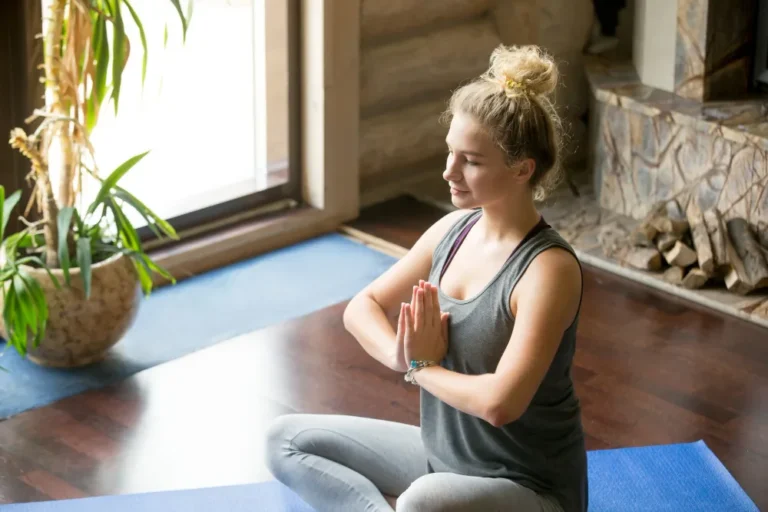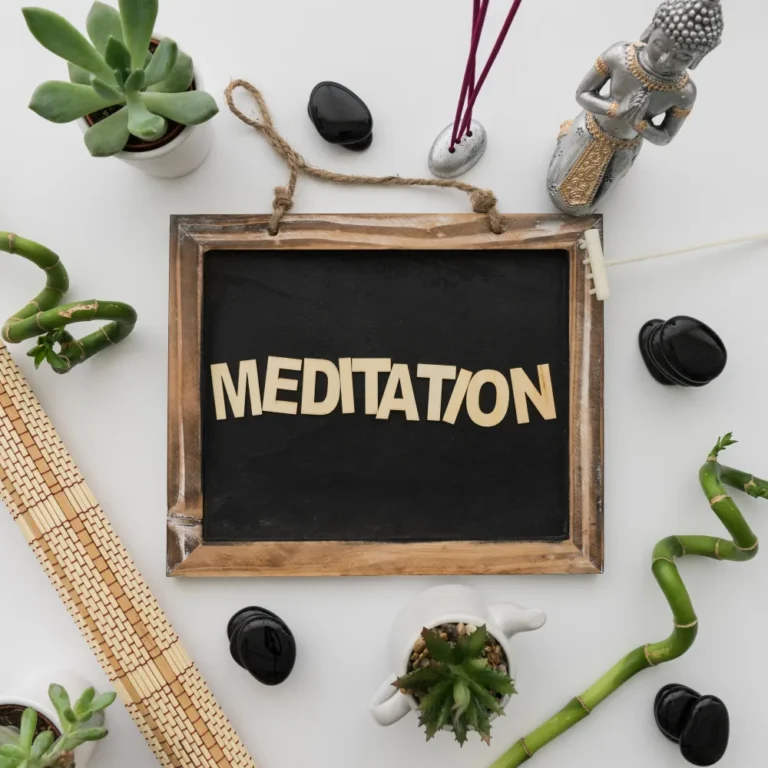Meditation Tips: A Complete Guide to Peaceful Living
Are you looking for meditation tips on how to do meditation at home? If so, you are at the right website where you can find such significant self-help tips to improve yourself mentally and physically. Meditation tips are extremely crucial these days due to anxiety, worries, concerns, and mental health issues. In this article, I will introduce you to tips for mindfulness and how to be mindful in the present moment in your life. Whether you are searching for meditation tips for anxiety, meditation for anger and frustration, mind relaxation tips, starting meditation tips, meditation tips for stress, or the best tips for meditation, you will learn these meditation tips in this article in depth.
Meditation is more than just sitting quietly; it is a practice that allows you to connect with your inner self, reduce stress, and find inner peace. With the fast pace of modern life, learning how to meditate effectively can greatly improve mental, emotional, and even physical well-being. Whether you are new to meditation or have been practicing for years, these meditation tips will help enhance your experience, making your practice more productive and fulfilling.
We will explore key meditation tips, focusing on how to develop the right mindset, maintain consistency, and overcome common challenges. Meditation, when done regularly, can reduce anxiety, promote better sleep, and enhance focus. Beginners often struggle with distractions or impatience, but these meditation tips will address those issues, offering practical advice for cultivating a mindful, peaceful state. From choosing the right environment to finding the perfect meditation style, this article will cover all aspects of improving your meditation practice. By the end of this article, you will not only have a deeper understanding of meditation techniques but also find a method that fits seamlessly into your life. Let’s dive into the world of meditation with these essential meditation tips.
Meditation Tips: Choose the Right Environment
The environment you meditate in plays a crucial role in how effective your session will be. A quiet, comfortable, and peaceful environment is key for beginners and seasoned meditators alike. Select a space where you won’t be disturbed by outside noise, people, or technology. Having a designated area for meditation helps the mind associate that space with peace and tranquility, allowing you to relax more quickly.
Example: Create a small meditation corner in your home with soft cushions, candles, and calming colors. Keep it clutter-free and add objects that help you feel calm, such as crystals or artwork that inspires tranquility.
Meditation Tips: Set a regular time.
One of the best meditation tips is to establish a regular time for your practice. Consistency is key to reaping the long-term benefits of meditation. Whether it’s in the morning to start your day with clarity or in the evening to unwind, sticking to a schedule will make it easier to build the habit.
Example: Aim for 10-20 minutes of meditation every morning. Set a reminder on your phone or place a note near your bed to encourage you to sit and meditate as soon as you wake up. This will set a positive tone for your entire day.
Meditation Tips: Start with deep breathing.
Breathing is the foundation of all meditation techniques. Focusing on your breath allows you to center your mind, reduce distractions, and enhance mindfulness. Starting with deep, controlled breathing will help calm the nervous system and set the tone for your meditation practice.
Example: Begin with 4-7-8 breathing, where you inhale for four seconds, hold for seven seconds, and exhale for eight seconds. This technique slows down your heart rate and helps you enter a meditative state more easily.
Meditation Tips: Find the Right Meditation Technique
There are various meditation techniques, and finding the right one for you can make all the difference. Whether it’s mindfulness meditation, loving-kindness meditation, or guided meditation, choose a method that resonates with you. Experiment with different styles to discover which technique helps you focus and relax the most.
Example: If you find it difficult to focus, try guided meditations. These often include verbal cues and visualizations that can help keep your mind from wandering.
Meditation Tips for Anxiety: Set an Intention for Your Meditation
Before beginning your meditation, set a clear intention. This could be a specific goal, such as reducing stress, increasing focus, or simply finding peace. Setting an intention gives your meditation practice a sense of purpose and can enhance your focus throughout the session.
Example: If you’re feeling overwhelmed, your intention might be to let go of stress. As you meditate, keep returning to this intention whenever your mind wanders.
Best Meditation Tips for Stress: Be patient with yourself.
One of the most important meditation tips is to be patient. Meditation is a skill that takes time to develop. It’s normal for the mind to wander or for you to feel restless during your session, especially as a beginner. Instead of getting frustrated, gently guide your focus back to your breath or your mantra.
Example: If your mind starts racing with thoughts, don’t judge yourself. Simply acknowledge the thought and return to focusing on your breath or the sensation of your body.
Use a meditation app or timer.
Using technology can be helpful in improving your meditation practice. A meditation app or timer ensures that you stick to your session length without constantly checking the clock. Many meditation apps also offer guided sessions, progress tracking, and reminders.
Example: Apps like Headspace or Calm offer free guided meditations that can help you stay focused, especially when you’re just starting out.
Incorporate mindfulness into your day.
Meditation doesn’t have to be confined to your practice sessions. Incorporating mindfulness throughout your day will reinforce your meditation efforts. Being mindful means being fully present in whatever you’re doing, whether it’s eating, walking, or working.
Example: Practice mindfulness while doing daily activities. When eating, focus on the taste, texture, and smell of your food. This will help you stay in the present moment and build a stronger meditation practice over time.
Overcome Distractions
Distractions are a common challenge when meditating, but there are ways to minimize them. Acknowledge distractions without engaging with them, and practice redirecting your attention. Over time, you’ll find it easier to maintain focus.
Example: If a loud noise or intrusive thought interrupts your meditation, note it and gently bring your attention back to your breath. Imagine each thought passing like a cloud in the sky.
Focus on Your Posture
Your posture during meditation is important for both comfort and focus. Sit in a position that allows you to be relaxed yet alert. Whether you’re sitting on a chair, cushion, or the floor, make sure your spine is straight to encourage proper breathing and mindfulness.
Example: If sitting cross-legged is uncomfortable, try sitting in a chair with your feet flat on the ground, your back straight, and your hands resting on your lap.
Practice gratitude meditation.
Gratitude meditation is a powerful variation that combines mindfulness with a focus on things you’re thankful for. This practice can shift your mindset, improve your mood, and increase overall happiness.
Example: Begin by taking a few deep breaths, then bring to mind three things you are grateful for. Spend a few minutes reflecting on why you are grateful and how these things bring joy to your life.
Experiment with Walking Meditation
If sitting meditation isn’t always feasible, try walking meditation. This form of meditation involves mindfulness while walking slowly and paying attention to each step. It’s an excellent way to clear your mind and incorporate meditation into your daily routine.
Example: Walk slowly in a quiet space, such as your garden or a park. Focus on the sensation of your feet touching the ground, your breath, and the movement of your body.
Embrace meditation for sleep.
Meditation can be a great tool for improving sleep quality. Sleep meditation techniques, such as body scan meditation or progressive muscle relaxation, can help you unwind and prepare your mind and body for rest.
Example: Before bed, lie down and practice a body scan meditation, focusing on each part of your body from head to toe, releasing tension as you go.
Track Your Progress
Keeping a meditation journal or tracking your progress with an app can help you stay motivated and reflect on your improvements. Tracking can show you how far you’ve come, helping you maintain your meditation habit.
Example: Write down how you feel after each session, noting any challenges or improvements. This can help you identify patterns and see how meditation is benefiting your life.
Practice meditation in groups.
Group meditation can enhance your practice by providing a sense of community and accountability. Meditating with others can also expose you to new techniques and help you stay motivated.
Example: Join a local meditation group or attend a group meditation class. Being around like-minded individuals can make meditation more enjoyable and engaging.
Use visualization techniques.
Visualization is a powerful tool for focusing the mind during meditation. Visualizing positive outcomes or calming scenes can help deepen your meditation experience and foster a sense of peace.
Example: Picture yourself on a peaceful beach, feeling the warm sand under your feet and listening to the sound of the waves. This can help center your mind and make meditation more immersive.
Combine meditation with yoga.
Yoga and meditation go hand-in-hand. Practicing yoga before meditating can help relax the body and prepare the mind for deeper meditation. The physical movement can release tension and increase mindfulness.
Example: Start with a few gentle yoga poses to release tension in your body. Follow this with a short meditation session to deepen your state of relaxation.
Listen to soothing music or nature sounds.
Adding soft, calming music or nature sounds to your meditation routine can create a more serene atmosphere. Sound can be a powerful tool for blocking out distractions and enhancing focus.
Example: Play gentle nature sounds, such as ocean waves or birds chirping, during your meditation session. This can help you stay relaxed and focused.
Use aromatherapy for enhanced relaxation.
Certain scents, like lavender or sandalwood, can enhance your meditation practice by promoting relaxation and reducing stress. Using essential oils or candles can create a calming environment for meditation.
Example: Diffuse lavender essential oil in your meditation space or light a calming candle to create a soothing atmosphere.
Be Kind to Yourself
Finally, one of the most crucial meditation tips is to be kind to yourself. Meditation is a personal journey, and progress may come slowly. Instead of being critical of your practice, approach it with self-compassion and understanding.
Example: If you miss a meditation session or struggle to focus, remind yourself that it’s okay. Each day is a new opportunity to start again.
Conclusion
Meditation is a transformative practice that can enhance every aspect of your life. By following these meditation tips, you can deepen your practice, overcome challenges, and unlock the true benefits of meditation. Whether you’re just starting out or looking to refine your technique, these tips will guide you toward a more peaceful, mindful way of living.
In conclusion, incorporating meditation tips into your daily routine can lead to profound changes in your mental, emotional, and physical well-being. Meditation is not just a practice but a lifestyle that encourages mindfulness, self-awareness, and inner peace. By choosing the right environment, setting a regular time, and exploring different techniques, you can make meditation a seamless part of your day. Patience, consistency, and self-compassion are key to developing a successful meditation habit. Whether you’re focusing on deep breathing, using guided meditations, or practicing gratitude and visualization, the goal is to find a method that resonates with you and brings you closer to a calm, centered state.
As you continue your meditation journey, remember to be kind to yourself and stay open to experimenting with different meditation tips that suit your personal needs. Over time, you’ll notice improvements in focus, reduced stress, and a greater sense of peace. At SV Enlightment, we encourage you to explore these meditation tips, as they will not only enhance your practice but also contribute to a healthier, more balanced life. Embrace the process and allow meditation to become a powerful tool for growth and tranquility in your everyday.







